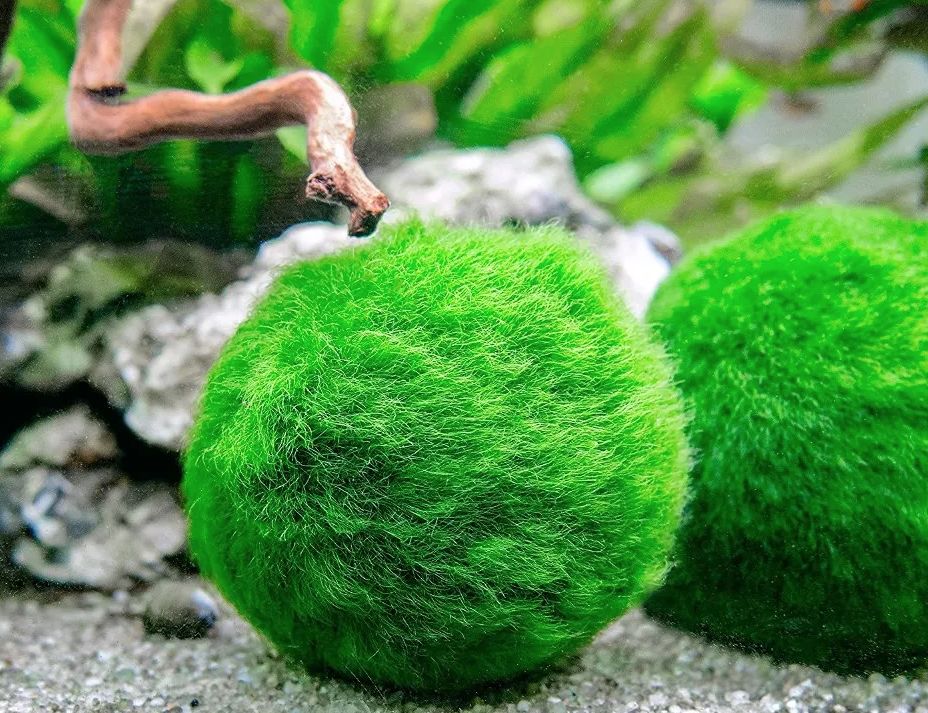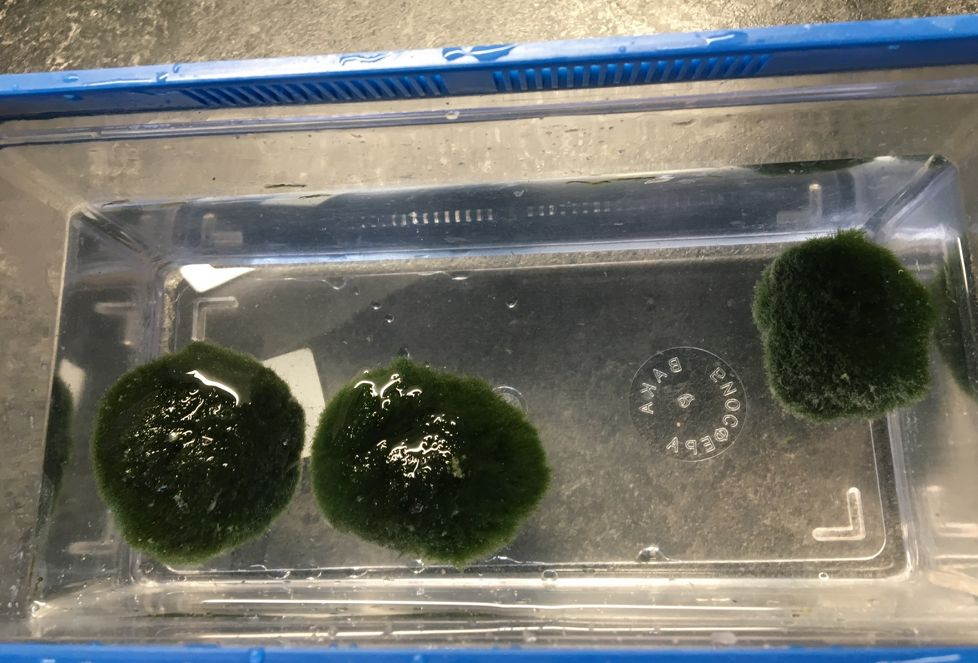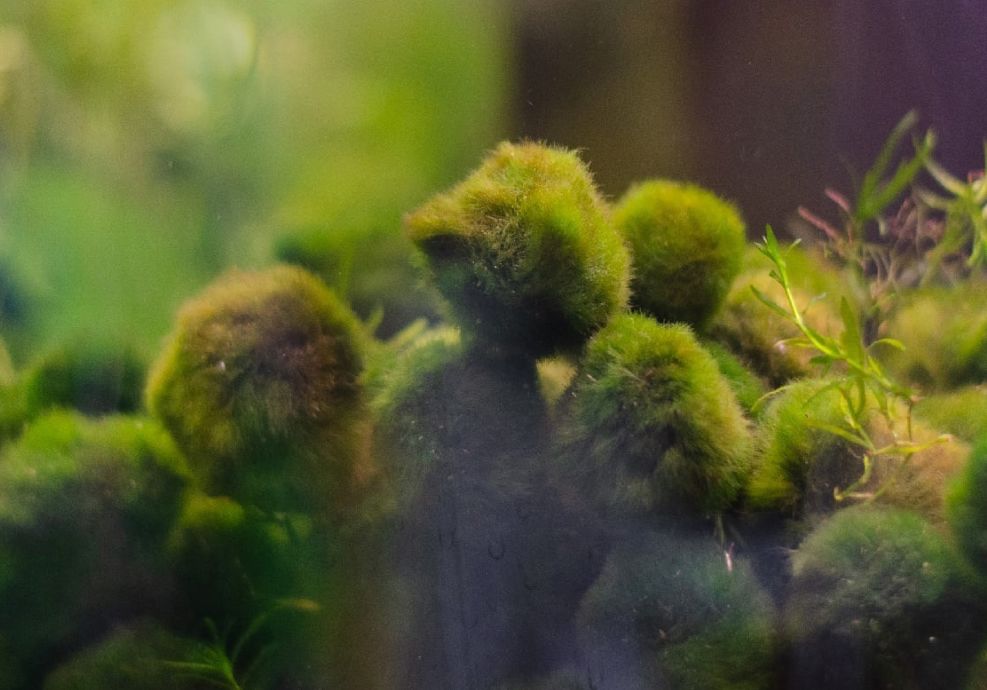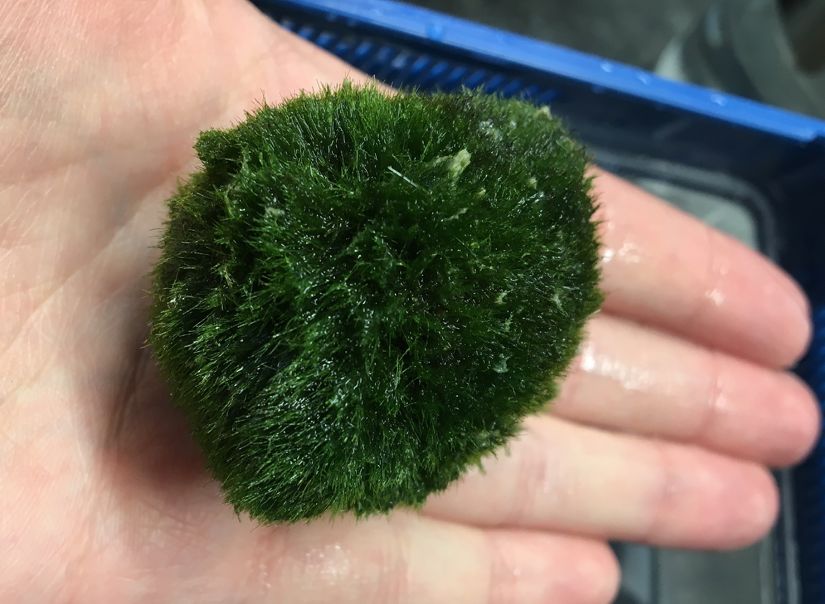Marimo moss ball is actually a type of algae known for its unique spherical shape. These algae thrive under specific conditions and have gained popularity among aquarists due to their appealing appearance and low maintenance requirements. They can adapt to various tank environments while also helping to purify the water. However, to ensure your marimo moss balls thrive without issues, it’s essential to follow certain care guidelines. In this article, we’ll explore those key rules for keeping marimo moss balls healthy in your aquarium.

Contents
Morphology
Carl Linnaeus was the first scientist to describe this algae in 1753, initially naming it Confevra aegagrophila. In 1843, taxonomists renamed it to Aegagrophila linnaei, and later to Cladophora aegagrophila. Currently, plant biologists classify marimo moss balls within the Cladophoraceae family, although they were once placed in the Cladophora family.
Notably, DNA studies have revealed that marimo moss balls do not exhibit characteristics typical of the Cladophora genus. As a result, since 2002, they have been referred to again as Aegagrophila linnaei. You may also encounter various common names for this algae, including Cladophora ball, lake ball, mossimo, and moss ball, highlighting the diversity in its naming.
Plant Habitat in the wild
Representatives of the Aegagrophila genus, which includes an estimated 40 to 170 species of algae, have acclimatized to both fresh and brackish waters in temperate and tropical latitudes. These algae thrive in shallow waters with high light levels, typically found in clean and transparent environments. The ideal conditions for growth include temperatures between 10-20°C (50-68°F) and moderate water movement, which helps prevent sediment accumulation.
Today, marimo moss balls can be found in various water bodies across the Baltic states, Scandinavian countries, Russia, Germany, and Japan. They are particularly well-known in several notable locations, including Lake Akan in Japan, where they are celebrated during the annual Marimo Festival; Lake Mývatn in Iceland, renowned for its biodiversity; Lake Klamath in Oregon (USA), which supports a unique ecosystem; and Lake Aitōluoto in Estonia, where conservation efforts are in place. In some regions, marimo moss is considered a protected or endangered species due to overharvesting, pollution, and climate change. Conservation organizations are actively working to preserve their natural habitats, often involving local communities in restoration projects.
Marimo moss typically grows in freshwater bodies characterized by cooler temperatures and moderate water movement, creating ideal conditions for its development. The moss starts as small fragments of algae that roll along the lake or riverbed, gradually accumulating layers of algae to form their distinctive spherical shape. They thrive in the shallower areas of lakes and rivers, where sunlight penetrates sufficiently to support photosynthesis. These environments generally have lower water flow, providing a stable substrate for marimo moss attachment.
Interestingly, marimo moss can form colonies or clusters, where multiple individual moss balls grow in close proximity. These clusters create unique and visually striking natural formations, enhancing the beauty of their habitats and providing shelter for small aquatic organisms. Additionally, marimo moss is known to absorb excess nutrients and pollutants from the water, contributing to the overall health of their ecosystems. Their presence can improve water quality and support the biodiversity of the surrounding environment.

Description
Marimo moss is an epiphyte, meaning it grows attached to surfaces such as rocks, driftwood, and other underwater structures, including submerged vegetation. A marimo moss ball is actually a colony of green algae characterized by attached bush-like structures. These structures consist of branching filaments made from a single row of multinucleate cells, featuring a multilayered shell and reticulate chloroplasts. The algae can grow in pillow-like or spherical colonies.
A spherical marimo moss ball can reach sizes of up to 15 cm in diameter, and in optimal conditions, its size can become virtually unlimited if the entire bottom of a water basin becomes covered with these algae balls. In tanks, larger marimo moss balls, which develop over several years, often become hollow inside. This creates a thick colony of algae resembling a shell. When cut in half, these balls reveal annual growth zones, providing insight into their development.
The spherical shape of marimo moss allows it to roll along the bottom with the water flow, ensuring that photosynthesis continues uninterrupted regardless of which side is exposed to sunlight. In some ponds, these balls can form layers, with two or three balls stacked on top of one another, each requiring access to light. Interestingly, marimo moss balls are green both outside and inside. The outer layer contains inactivated chloroplasts, which become active if the algae fragment, ensuring continued growth and energy production.
| Characteristic | Description |
|---|---|
| Appearance | Spherical green balls with a soft, velvety texture |
| Scientific Name | Aegagropila linnaei |
| Common Names | Marimo moss, Moss balls, Lake balls |
| Family | Cladophoraceae |
| Native Habitat | Freshwater lakes and rivers in Japan, Iceland, and Estonia |
| Growth Rate | Slow (expands a few millimeters per year) |
| Light Requirements | Adaptable to a range of lighting conditions |
| Water Temperature | Prefer cooler temperatures (68°F to 77°F / 20°C to 25°C) |
| Water Movement | Thrive in areas with gentle water movement |
| Care Level | Very low maintenance and easy to care for |
| Propagation | Reproduces by division, fragments grow into new moss balls |
| Environmental Benefits | Oxygenates water, absorbs nitrates, provides grazing area |

Difficulties in keeping
This is one of the most popular plants among beginning aquarists. Marimo moss balls is the only algae which is very welcome in a tank and its appearance in the indoor or house ponds is always up to their owner wish. The plant is a good looking one, unpretentiousness and moreover it serves as a natural water filter and a shelter for aquarium shrimps.
Keeping the marimo moss ball in nursery tanks is very useful, especially in those where you have fish juveniles which have just recently started to feed actively.
Firstly, the plant is incomparable in terms of its unpretentiousness and efficiency as a natural biological filter, because it perfectly collects dirt; secondly, just like all plants it produces oxygen. Moreover, lots of microorganisms dwell on the plant surface and serve as food for fish juveniles.

Marimo moss ball care in a aquarium
Water Parameters
In tanks, marimo moss balls thrive in both soft and hard water. Initially, they appear shapeless but gradually transform into multiple clusters growing in various directions. Over time, the spaces between these clusters fill with new small plants, and the overall shape becomes spherical. This process is slow, often taking over a year. Interestingly, the colony tends to form a spherical shape regardless of the initial form.
Hydrochemical parameters have minimal impact on their development; water pH can vary significantly from 6.7 to 8.8, although a slightly acidic or neutral medium is recommended. Total hardness can reach up to 15 dGH, but if hardness exceeds this, the algae may degenerate, losing their attractive appearance.
Temperature
In their natural habitats, marimo moss balls are found only in cool waters of Ireland and Japan. Consequently, in an aquarium, they prefer cooler water temperatures. If the water temperature rises above 25 °C in summer, it’s advisable to move them to a cooler tank. Without this adjustment, the balls may break apart or stop growing. For successful care, maintain a water temperature between 6 to 22 °C and perform regular water changes. Some colonies may adapt to warmer water (around 24 °C) and survive for up to six months without apparent issues. Although fragmented colonies can still thrive as viable organisms, this regeneration process is slow and can take years.
Lighting
Marimo moss is adaptable to a wide range of lighting conditions, thriving in low to moderate light environments. Avoid intense or direct sunlight, as this can cause the moss to turn brown or yellowish, adversely affecting its health.
Water Movement
Marimo moss prefers gentle water movement. Ensure adequate filtration while avoiding strong water flow, which can dislodge or damage the moss balls. Gentle currents help maintain their spherical shape and promote healthy growth.
CO2
While marimo moss can survive well with the CO2 levels naturally present in aquarium water, some enthusiasts choose to supplement CO2 to enhance growth. Adding CO2 in a controlled manner can accelerate photosynthesis and lead to increased growth rates for marimo moss.
Nutrients
Marimo moss derives nutrients from the water column and absorbs nutrients released from fish waste and decaying organic matter. This makes marimo moss a valuable addition to the aquarium ecosystem, aiding in nutrient cycling and contributing to overall water clarity.
Tank Mates
Marimo moss is compatible with a variety of tank mates. It does not create shade or stick to other plants, nor does it emit any phytoncides that could hinder the growth of higher aquatic plants. Fish, including juveniles, may occasionally nip at the surface, but they primarily use it to dislodge food particles. Larger fish (like flowerhorn) generally show no interest in marimo moss at all.
Cleaning Process
Marimo moss has outstanding filtration properties; it captures debris while filtering water. However, over time, the algae can appear muddy. Healthy marimo moss should be clean and vibrant; if dirt accumulates, gently wash it with tank water. You can also rinse it under running cold water, squeezing it slightly to remove excess moisture without damaging its structure. It’s best to handle the moss with care, placing it in a jar for washing. In a tank, the natural rolling motion can lead to damage, so care is essential. Shrimp are particularly beneficial in this context, as they actively clean the moss, making marimo moss a welcome addition to shrimp tanks.

Propagation
The marimo moss ball propagates quite easily through vegetative reproduction, where the plant divides into pieces that then form new colonies. This method allows for a straightforward means of expansion within a tank or natural habitat. However, it’s important to note that marimo moss has a rather slow growth rate, averaging only about 5 mm per year. Because of this slow development, it is often more practical to purchase new plants rather than wait for a divided one to grow back into a full-sized colony.
Marimo moss balls can fall apart naturally over time, or you can intentionally cut or trim them into smaller pieces. After being separated, these fragments should be placed in water at a temperature of about 18-20 °C. Within a year or two, new generations of neat spherical colonies will develop, making them an enjoyable and rewarding addition to any aquarium.
Additionally, proper care during this process is crucial. Ensure that the water parameters remain stable and that the fragments are given enough light and nutrients to thrive. With the right conditions, the propagation of marimo moss balls can lead to a beautiful and lush aquatic display in your tank.